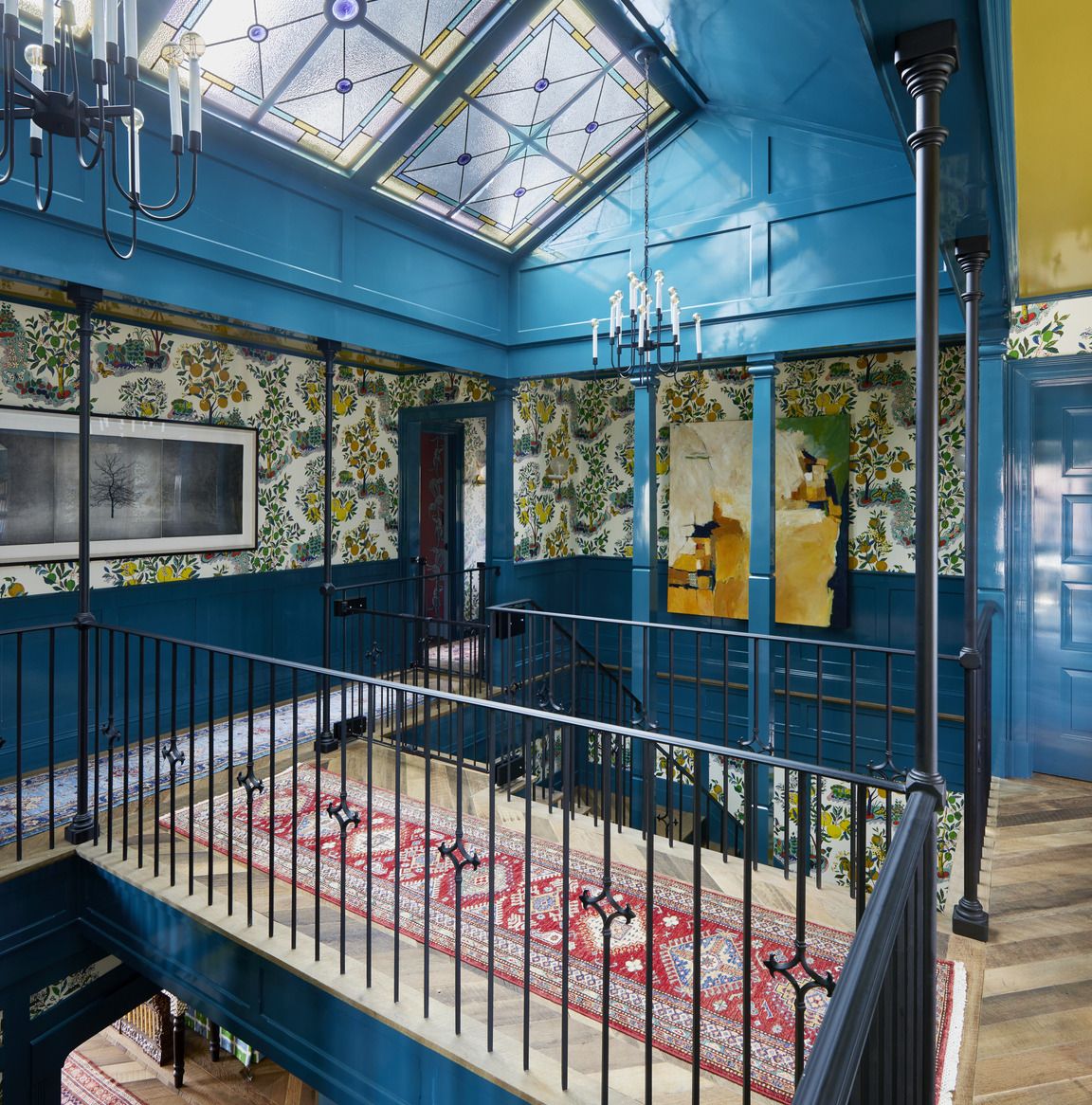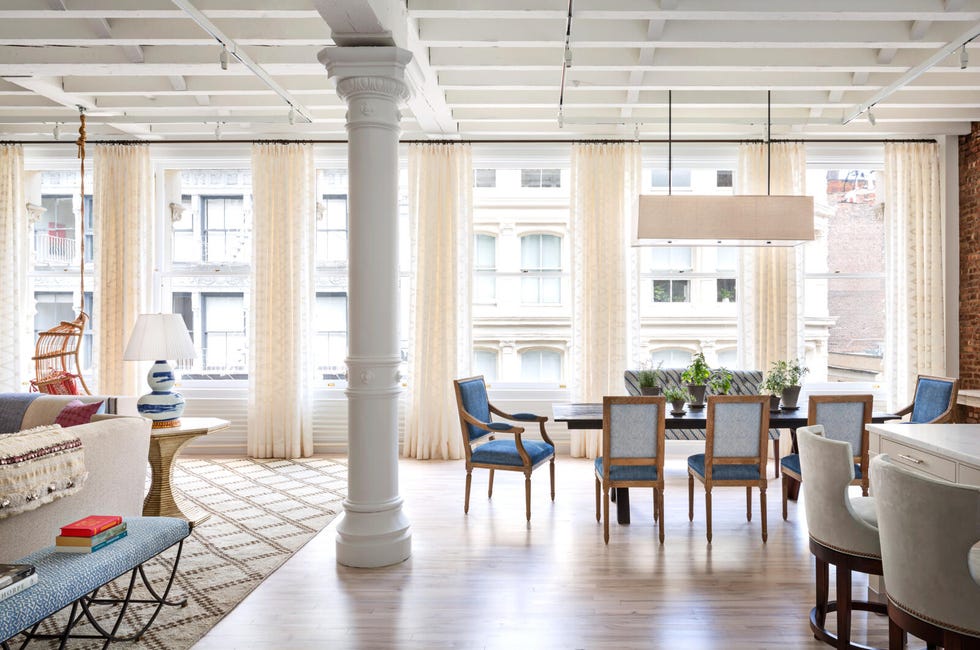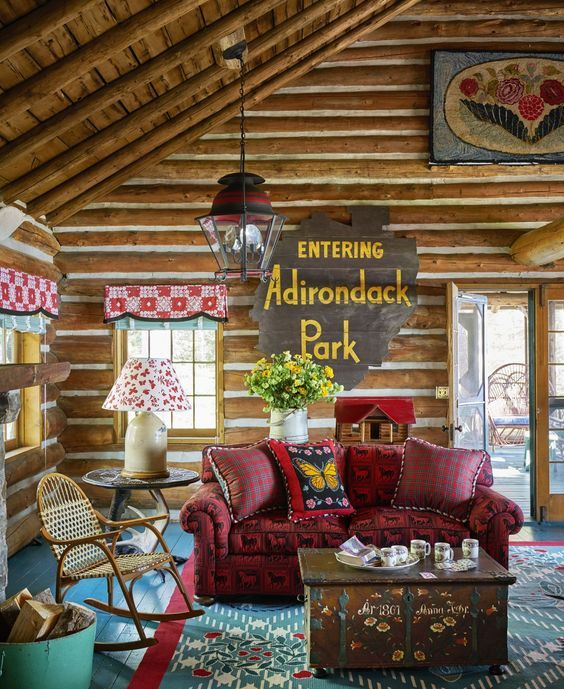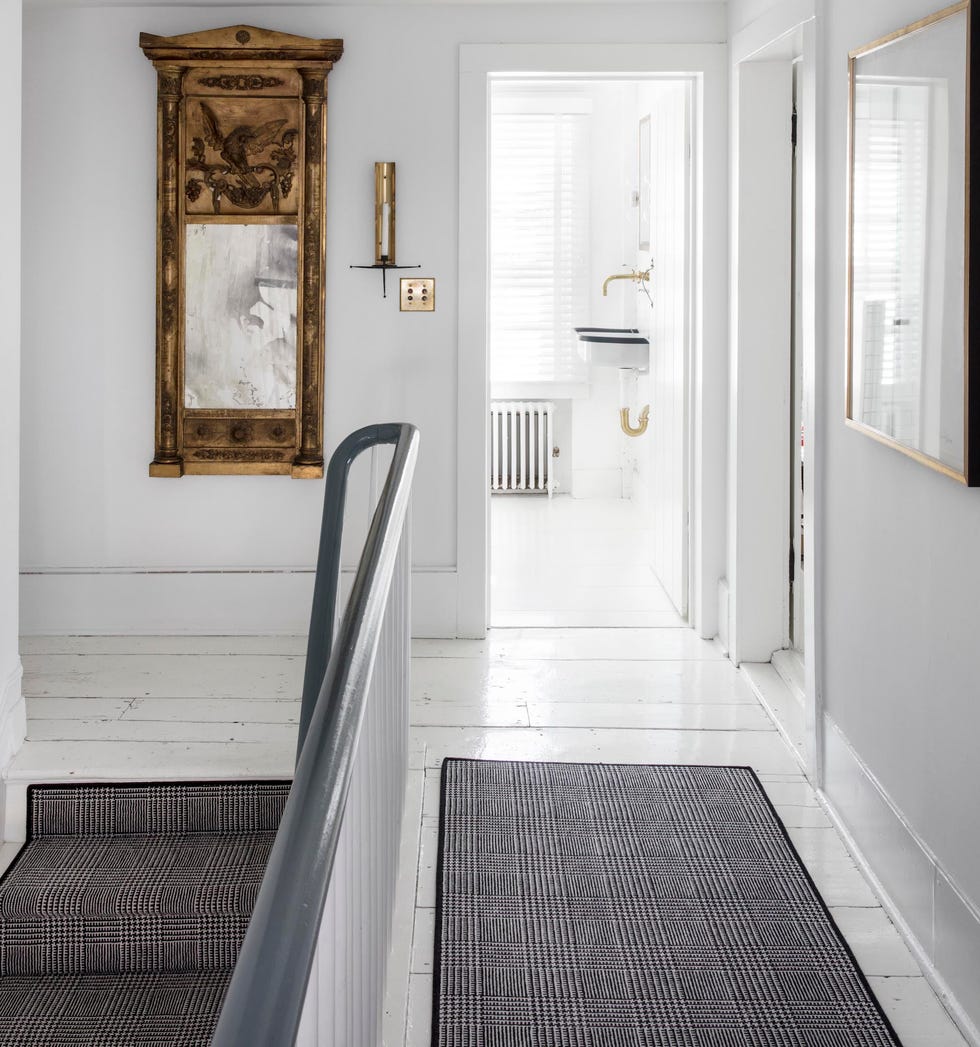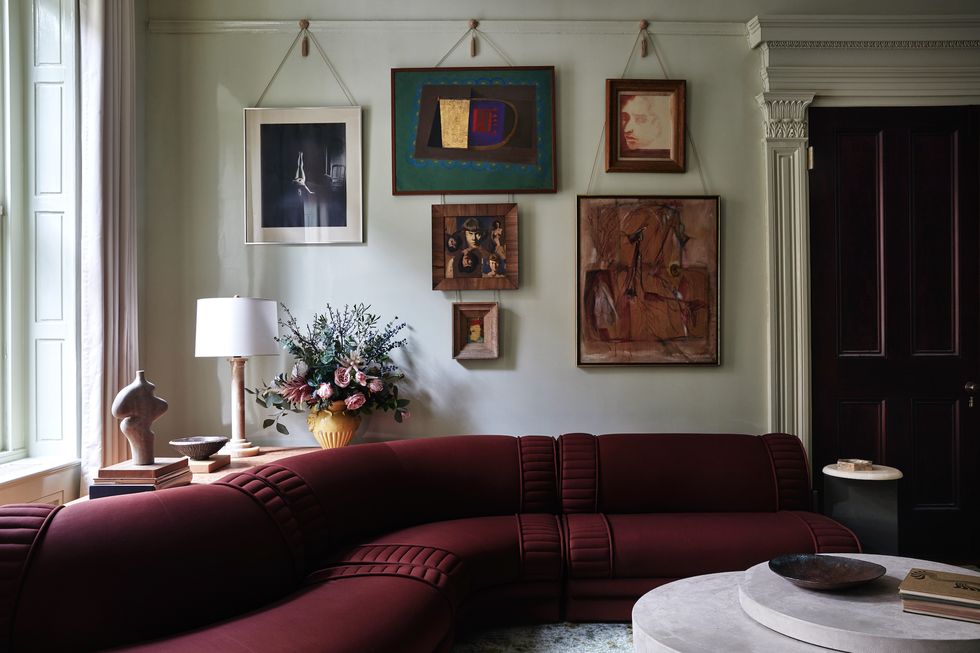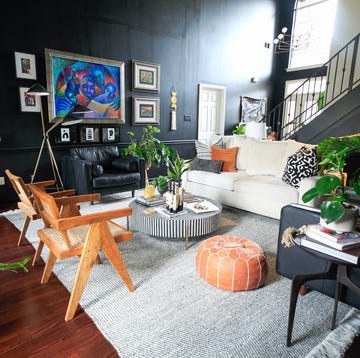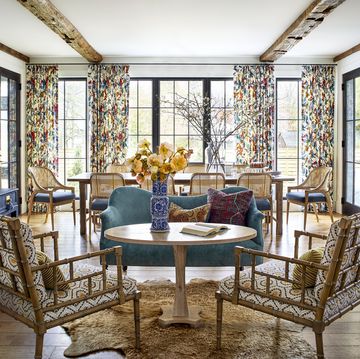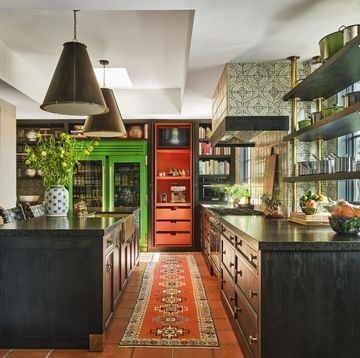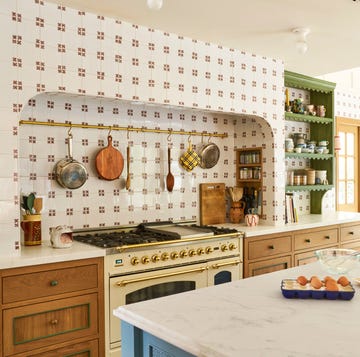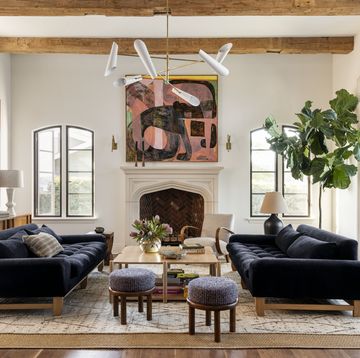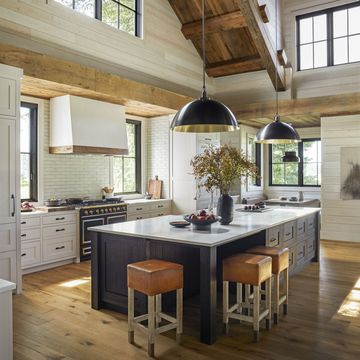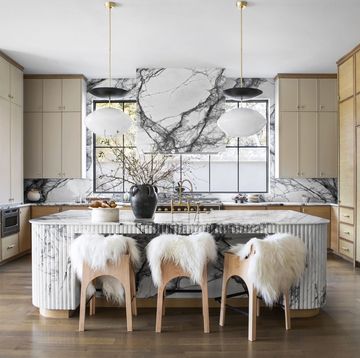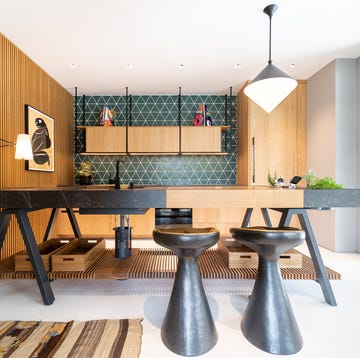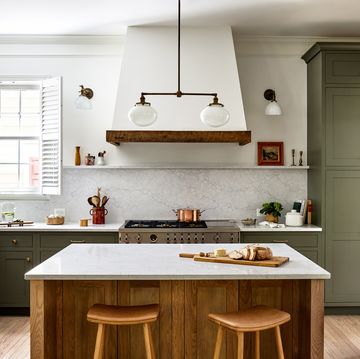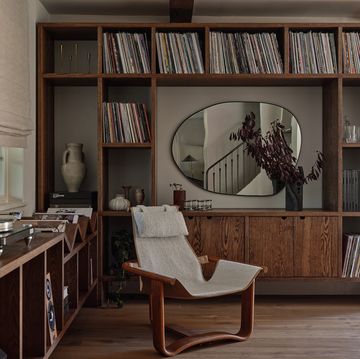Instagram and TV can make fixing up a historic home seem rewarding, fun, and glamorous. And in the end, it often is! But rest assured, it’s also a complex undertaking that requires a discerning eye and smart forward-planning. We read through the tedious government documents and tapped tons of experts in the real estate and restoration spaces to break down all the ins and outs for you before you embark on your own project (so maybe wait on impulse buying that Zillow steal!). Here’s what to expect and how to navigate the process of restoring a fixer-upper, whether it's a formerly fancy historic home or just a house that's just been neglected for a decade or so. Follow our guide, which lays out all the advice from the pre-purchasing phase to the renovation and decorating stages, and even re-sale time.
What to Consider Before You Buy
If you're on the fence about investing in an old home for whatever reason, getting a sense of the potential pitfalls and expected difficulties will equip you to make an informed decision before committing. Below, we've boiled it all down to four expert-approved and driven tips.
- Inspect for Defects:
Have a licensed home inspector look for signs of asbestos, wood rot, mold, and lead (sellers in the U.S. are required to disclose the latter if you inquire). Then get quotes for remediation. Take note of old windows, too; they let in noise and drafts and may need to be replaced at a steep cost. Tammy Randall Wood, a designer with experience renovating and flipping old homes, emphasizes the importance of evaluating energy costs to understand what will be required to improve efficiency. "In the West, that might be looking at the water bill and installing more drought-resistant landscaping. In colder climes, this might involve looking at the heating bill to see what can be done to reduce costs, like insulating the attic," she says, adding that when she did this, it "reduced the cost of heating by 20 percent the first year."
- Evaluate the Location:
Just as with any home purchase, it's location, location, location: Being on a family-friendly street near a great school may not matter to you now, for example, but what about in five years or if you try to sell? With old houses, it's also always a good idea to look into town records: If the building is associated with any stigmatizing events like a violent crime, that could affect market value later. For more information and legal advice on real estate disclosure laws regarding stigmatized properties, read our breakdown.
- Consult a Structural Engineer:
A particularly rundown or neglected old home is likely riddled with issues in the walls and foundation. Understanding these is essential in predicting the scope of your renovation—is it a matter of going down to the studs, or will you basically be rebuilding the house? And, even if it isn't totally dilapidated, there still might be some hidden costs because the building codes and restrictions were likely vastly different when it was built, whether it has to do with zoning issues on a steep grade of natural disaster-prone area.
- Study its Historical Style:
Restoring an 18th-century farmhouse isn’t the same as transforming a midcentury ranch. Does your vision align with the architectural period? A farmhouse may have dormers, dark oak paneling, and small rooms—charming, but not right if you dream of a bright, open floor plan.
What if the House Is Landmarked?
This term "landmarked" gets thrown around a lot, but it actually has a very specific meaning. It's basically what distinguishes an officially recognized historic home from an old house. Though the definition can vary because rules and regulations vary so much state-to-state, the general rule of thumb in the U.S. is that a home is deemed a landmark by the government after an application is filed.
To submit an application for rezoning a nonresidential building to a home, you’ll want to hire a real estate lawyer, prep detailed plans from the design team, and budget to set aside money to cover fees.
The main criteria include the age of the property, who used it, and for what purpose. Examples include: if it ever hosted notable inhabitants (and there's a record of such!), for example, a famous writer rented a room in; it exemplifies a distinct architectural movement; it was the site of a historically significant event. Ahead, learn why you might want to get it registered, and the special circumstances of owning a home that's already listed on the National Register of Historic Places.
Three Extra Perks of an Old Home
It’s not all hidden costs and power tools...
- Mature Landscaping: Centuries-old trees lining the block add value to a property. Same goes for storybook vines growing up the stone or moss on the roof, so long as they aren’t a health or safety hazard. Put down the pressure washer and embrace the charm.
- Lasting Construction: Not every old home requires a new foundation. “Historic homes often boast sturdy construction, [as they were built with] meticulous attention to detail that you can’t find these days,” says realtor.com managing editor Rachel Stults. “Instead of a cookie-cutter McMansion, you’ll have a home with unique architecture and a deep backstory.”
- Discounted Price: Depending on the region and real estate market, older homes that will require elbow grease and ongoing maintenance may be more affordable than newer counterparts. Of course, you’ll need to factor in the cost of the restoration. But up front, it could be a deal.
You Live in a What?
So maybe you find yourself curious about what it's like to an old non-residential space into a home. As many designers have proven, there's infinite possibility when it comes to converting a nonresidential space into a home! Check out a few of our favorites:
1. Place of Worship
This former church was converted into townhome lofts circa 2016, and Natalie Chong of Nest Design Studio spent five years completing her unit. “Every morning,” she recalls, “I’d wonder who the carpenter was who carved out a little notch in the corbel that no one was ever supposed to see because it was so high up.”
2. Industrial Warehouse
Built in downtown Manhattan in 1890 as a manufacturing facility, this loft has original intact cast-iron columns. To make it “feel comfy and cloudlike” at the behest of the owner, Ferguson & Shamamian Architects and decorator Elizabeth Lawrence of Bunny Williams coated it in white paint and added streamlined furnishings.
To submit an application for rezoning a nonresidential building to a home, you’ll want to hire a real estate lawyer, prep detailed plans from the design team, and budget to set aside money to cover fees.
3. Tenant Farmhouse
When American-born French Baroque musician William Christie bought a 16th-century ruin on a former tenant farm in Loire, France, the floors were dirt. Christie worked with local craftsmen to source period pieces like 17th-century floor tiles and create a trompe l’oeil painting with natural vegetable pigments, a 16th-century technique.
4. Summer Camp
Designer Anthony Barratta was enlisted to turn this summer camp into a laid back and cozy gathering space for a renowned wildlife photographer. Comprised of a handful of cabins on a lake in the Adorandacks, an early 1900s camp turned out to be the ideal spot for a 21st-century family compound who loves the outdoors. With rustic Americana charm thanks to nostalgic found signs, tons of patchwork and pattern, and unpretentious furnishings, it's as much a woodsy wonderland as was in its former life, but this time, just a touch more elevated.
How to Mix Old and New Aesthetics
Once the tedious, nitty-gritty parts of restoring an old home are out of the way, you get to think about the fun stuff: decorating it! Though exciting, the challenge isn't over—designing an old space that doesn't feel like a relic but also doesn't clash is somewhat tricky... So here are a few suggestions and tips from designers who've mastered this unique position.
